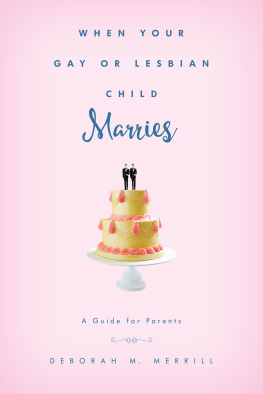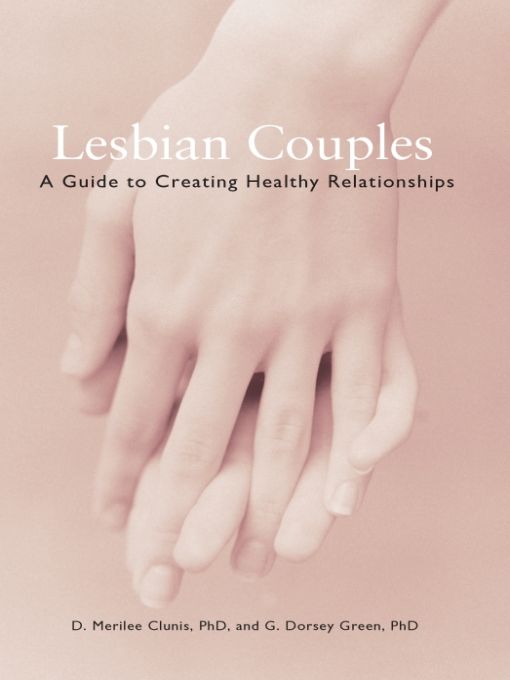Table of Contents
Introduction
When Seal Press asked us to revise Lesbian Couples, which was first published in 1988, we had no idea how much the lesbian and societal landscapes had changed since then. We knew that we had aged; we are now in our fifties and sixties. Dorsey has gotten divorced and started a new relationship; one son has graduated from college and the other has started (she was pregnant with her younger boy when we were writing the book in 1984). Merilee and her partner, Margaret, have celebrated their twenty-eighth anniversary, attended the weddings of both children, and welcomed their first grandchild into the world.
We had not realized how much we had unconsciously spoken from the perspective of the thirty- to forty-five-year-old age group in writing the first three editions. As we looked around this time, we identified different generations of lesbians. To help us address how issues might affect women of different ages, we divided them into three groups: those under thirty-five, those over fifty-five, and those in between. What emerged was a picture of (at least) three different world viewslesbian style. Hopefully we have done justice to these perspectives.
We tried to be aware of how race, class, physical and mental ability, and geographical location might interact with an individuals age (and when she came out) in creating her experience in the world. Each of us, then, brings our unique self into a relationship with an equally unique other. This is what makes relationships exhilarating and frustrating.
The first edition of Lesbian Couples now looks like a snapshot of lesbians in relationships in the mid-to-late 1980s. By nature, a photograph is two-dimensional, and in some ways we think the picture we created with our book was two-dimensional as well. It was a description of lesbian couples as we knew them to be. In the 80s, we needed pictures because most lesbians (and certainly most of mainstream society) did not know what communities of lesbians looked like. We only knew what our own lives were like. We needed reflections of ourselves and information about lesbians as a group. Now as we go to press in 2004thirty-five-plus years after Stonewall, the symbolic beginning of the modern lesbian and gay civil rights movementwe wanted to provide more than photographs. We tried for more depth and complexity.
This edition of Lesbian Couples builds upon the third edition, which was less descriptive and more prescriptive than previous editions. This is partly because we are more opinionated and more willing to state our views. But it is also because we know more about relationships in general and lesbian relationships in particular. The last decade has seen an enormous amount of new research about couples: what contributes to their health and what helps them to improve when there is trouble. Print, movie, television, and computer media have also contributed more information and images of lesbians and our families. This is a good thing; however, public focus is still predominantly on white lesbians and therefore offers a limited picture. We continue to need more material by and about women of color.
There has been an explosion of resources for and about lesbians in the last fifteen years. There have been a few books through the years that explore relationships in general, but it is the diversity of topics that truly underscores the changes in societys recognition of lesbians and bisexual women. Sex between women, as usual, has received much attention, with Felice Newmans The Whole Lesbian Sex Book being a good example. Bisexuality, which used to be seen as a stepping stone to a real sexual orientation, is now viewed as a separate and valid orientation. Bilives: Bisexual Women Tell Their Stories by Kate Orndorff is one contribution to this growing body of information. As parenting has become more visible in the queer community, books geared toward lesbians, both as single and coupled parents, have become available. Our The Lesbian Parenting Book and The Queer Parents Primer: A Lesbian and Gay Families Guide to Navigating the Straight World, by Stephanie Bull, are two examples of the different approaches available. A Donor Insemination Guide: Written for and by Lesbian Women by Marie Mohler and Lacy Frazer is as specific as one can get about lesbians getting pregnant. Janet Wright expanded the discussion on parenting and families with Lesbian Step Families. Coming out has moved from how-do-you-tell-your-parents to Lesbian Epiphanies: Women Coming Out in Later Life by Karol Jensen. Disability is receiving more attention and titles as more people recognize the importance of the issue. And of course, any perusal of online or progressive bookstores provides plenty of wedding guides for lesbian and gay couplesgeneral legal guides, along with the recent addition of books arguing specifically for the rights of lesbians and gay men to marry legally in the United States. Jonathan Rauchs Gay Marriage: Why It Is Good for Gays, Good for Straights and Good for America is one example of the flood of books produced in the last two years. None of these books existed when we first wrote Lesbian Couples!
Lesbian novels and mysteries contribute fictional accounts of couples who try all sorts of ways to succeed in their relationships as well as in other areas of their lives. Movies, videos, and documentaries show lesbians, their relationships, and their children in a realistic light. Millions watched Ellen DeGeneres, of television fame, as she came out over an airport loudspeaker and as her personal life splashed over the pages of major magazines. Queer as Folk and The L Word brought us televised shows with a gay/lesbian focus, with lesbian couples on television becoming more routine, some even including children in their families. Rosie ODonnells coming out and subsequent adoption of children brought the reality of lesbian families into millions of homes. Daring for its time, the Hollywood film Boys Dont Cry brought transgender issues to a mainstream audience with the tragic story of Brandon Teenas murder. Lesbian and gay magazines and newspapers are sold in large and small bookstores. Newsweek and other mainstream magazines routinely run stories, some flattering and some not, about many facets of the lesbian, gay, and bisexual communities. The Internet has hundreds of lesbian and gay sites, allowing anyone with a computer and modem access to more information than any one person could possibly assimilate. We have come a long way from the depressing ending of Radclyffe Halls The Well of Loneliness, in which the heroines gift to her lover is a heterosexual mate.
Society has matured in other ways as well. Many white peoples understanding of racism has expanded to include awareness of their own white privilege. Individuals with more than one racial ancestry are asking for acknowledgment of their multiracial and multicultural heritages. Stepfamilies are beginning to receive the recognition and support they deserve. The AIDS epidemic has become less associated with gay (and lesbian) people and is seen more accurately as a global threat to everyone. The wars in Iraq and Afghanistan, regardless of personal opinion, have forced more American awareness of Islam and enriched the countrys conversation in general about the relationship between religion and state. The American Disabilities Act has advanced the rights of people with disabilities to give them more equal access to employment, education, transportation, and housing. Lesbian couples who want their marriage or celebration of commitment recognized by a church or synagogue are able to do that in many areas of the country.




